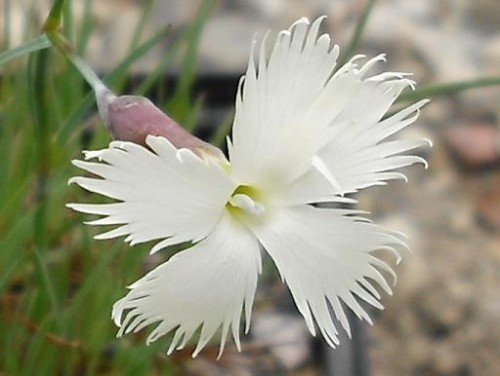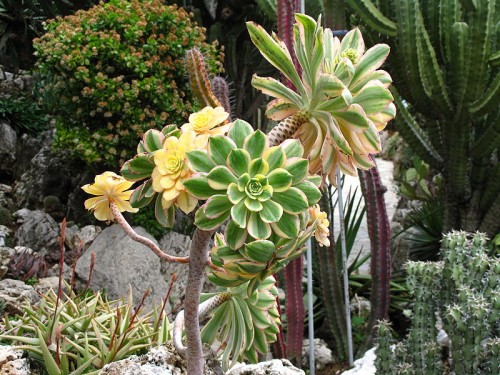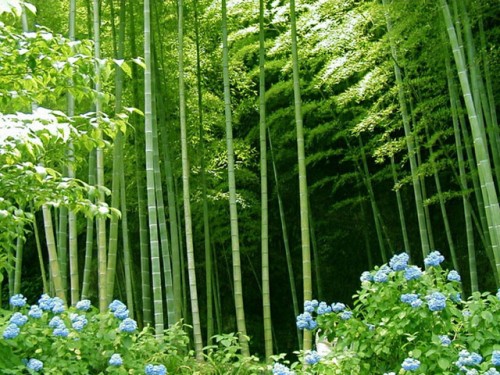Are you ready for another Latin lesson? I hope you are finding this useful, and please, if you have a question, I will do my best to answer. So lets look at a few more ‘A’ words. Aquatica, Arenarius, Arboreum and Arundinacea.

Aquatica – I think this might be one of more obvious ones, but just in case — Aquatica refers to water. Aquatica plants are either water plants or plants that grow near the water. In the case of something like Mentha aquatica, it is the only variety of Mint that grows in this environment. Phalaris aquatica (above) is bunch grass that I find particularly attractive – but when researching for this post, I learned it is invasive in many areas and is toxic and even deadly to some livestock. (so, I’m not planting it) Check out other Aquatica plants (like the really cool looking Sensitive plant – Neptunia aquatica) on this pinterest board.
Learn about Arenarius, Arboreum and Arundinacea after the jump.
Arenarius means that at plant is psammophylic. Right. And psammophylic means???….. that something is sand loving. These plants have a tendency to rhizomeatous (sp?) so that they can deal with their less than fertile and often dry reality. Dianthus arenarius (above) is a great rock garden specimen and Blue Dune Lyme Grass (Elymus arenarius ‘Blue Dune’) is a great firescaping plant. Firescaping plants are generally have a high moisture content, are low growing, and their stems and leaves are not resinous, oily or waxy. Blue Dune Lyme Grass has all of this plus great soil retention qualities.
Find more Arenarius plants on this pinterest board.
Arboreum – You might be tempted to think that Arboreum refers to trees themselves….and a lot of times it does. But what it really means is that it is tree-like. Take the small Aeoniums, they are not trees, but certainly a big part of their charm is their tree-like characteristics.
I am currently obsessing over Oxydendrum arboreum (Sourwood Tree). It is a little known native tree that has a lot of great qualities including the most beautiful red fall color (see an image of it on my pinterest arboreum board). Also check out this great article about the Sourwood and all it’s great features that range form highly fragrant lily of the valley type flowers, characterful bark, and even Sourwood honey (whose tried this…I’d like to know if it is good?).
Arundinacea – I have to admit I am fascinated with Bambusa arundinacea (above) not just because it is so beautiful and foreign to New England, but also because I am not quite sure why it carries the Arundinacea name. Arundinacea refers to a Reed- like quality. Many Arundinacea plants are obviously reed like, but this one I am not so sure about — and I’m wondering if perhaps it is that the leaves have the stereotypical ribbon -like quality? Or is it simply their height and stature? I guess this is proof that even with Latin there sometimes remains mysteries about a plants name.
Check out Stipa arundinacea (the most popular arundinacea plant I can think of) and others on my Arundinacea pinterst board. There is a great shot from Annies Annuals of it combined with Castor Bean that really sings.
I have a few more botanical Latin A words before we move on to the ‘B”s. In the mean time, what are your favorite Aquatica, Arenarius, Arboreum and Arundinacea plants?
images: Phalaris aquatica from ask.com, diantuhs arenarius from swedish rock garden , Aeonium arboretum albovariegata, bambusa arundinacea



Love the use of Pinterest!
And love this series!
I’m fond of the arundinaria genus, which includes the bamboos native to the Southeastern US (usually just called cane or river cane).
I’ve had sourwood honey before. It’s very good: so florally it’s almost fruity, even though honey is usually already fruity to begin with.